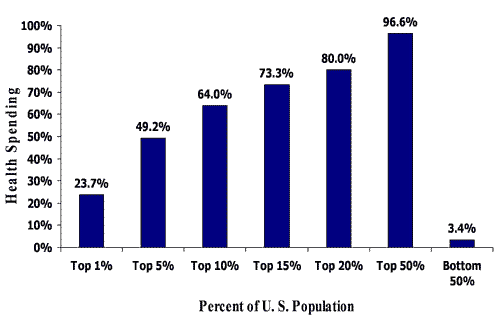One of the hottest health reform topics is Medical Homes: Medicare has Demonstration Project starting this year, several states have implemented, (or are implementing), medical home related initiatives, the Center for Studying Health System Change (CSHSC) released a great white paper titled “Making Medical Homes Work,” and the New York Times just had a story about how IBM is teaming up with United Healthcare to promote Medical Homes for their 11,000 employees and dependents in Arizona.
Definition of Medical Homes
One of the controversies in Medical Homes is the definition. CSHSC and many others use the definition developed by 4 national medical societies which combines aspects of preexisting primary care and chronic care models with the goal of creating a primary care “home” that can more effectively address the needs of patients with chronic conditions.
Focus on Chronic Diseases – That’s Where the Money Is
This combination makes perfect sense since the majority of healthcare costs are used by the least well patients: In 2003, 80% of health spending went for 20% of people in the US, and the Agency for Healthcare Research and Quality estimates that 70% of healthcare spending is for treating chronic diseases.

[Source: Kaiser Family Foundation]
Emphasizing chronic disease management for Medical Homes reflects how most healthcare innovations, (including technologies, payment schemes, and care delivery changes), are first used in the most organized and intensive care settings – such as hospitals – and then migrate out into primary care and preventive settings, including home use and patient self-management. Thus Medical Homes’ focus on care coordination for chronic conditions parallels the decades old movement and growth in team-based care in hospitals.
Medical Homes and Wellness Care
Beyond improving chronic disease management, Medical Home capabilities should also help promote better wellness for all patients, i.e. the other 80% of people. Patients wellness from better exercise, diet and other actions could be improved through Medical Homes providing more targeted counseling and self-management training. Similarly, Medical Homes use of patient registries and reminder systems should increase compliance with vaccinations, prenatal vitamins, and reminders to follow-up on patient specific wellness interventions.
Long-Term Vision for Medical Homes
The long-term vision for Medical homes should include how they can improve clinical care for all people in a community – not just those with chronic or costly illnesses. As I work with payers, clinicians, and others about the desired characteristics of Medical Homes, this vision should help shape how payments for providing Medical Home services are structured and evolve, (e.g. PMPM for specific sets of Medical Home capabilities), and how additional compensation – such as bonuses – are constructed and modified to reward Medical Homes for achieving clinical and cost outcomes. Such a vision should also be part of our national long-term strategy for making healthcare delivery more efficient and coordinated, and transforming our delivery system’s culture to embrace the rapid adoption of change to provide greater clinical and societal value.

I definitely enjoyed reading through this write-up.Many thanks.
The changing healthcare landscape will drive the disease management (DM) industry to adopt more information technology in its practice, and personal health technology providers can earn more than $460 million from the sector in 2013, according to Parks Associates’ recent report “Disease Management Industry and High-Tech Adoption”.
Thanks, Mindi Sue
Parks Associates
http://www.parksassociates.com